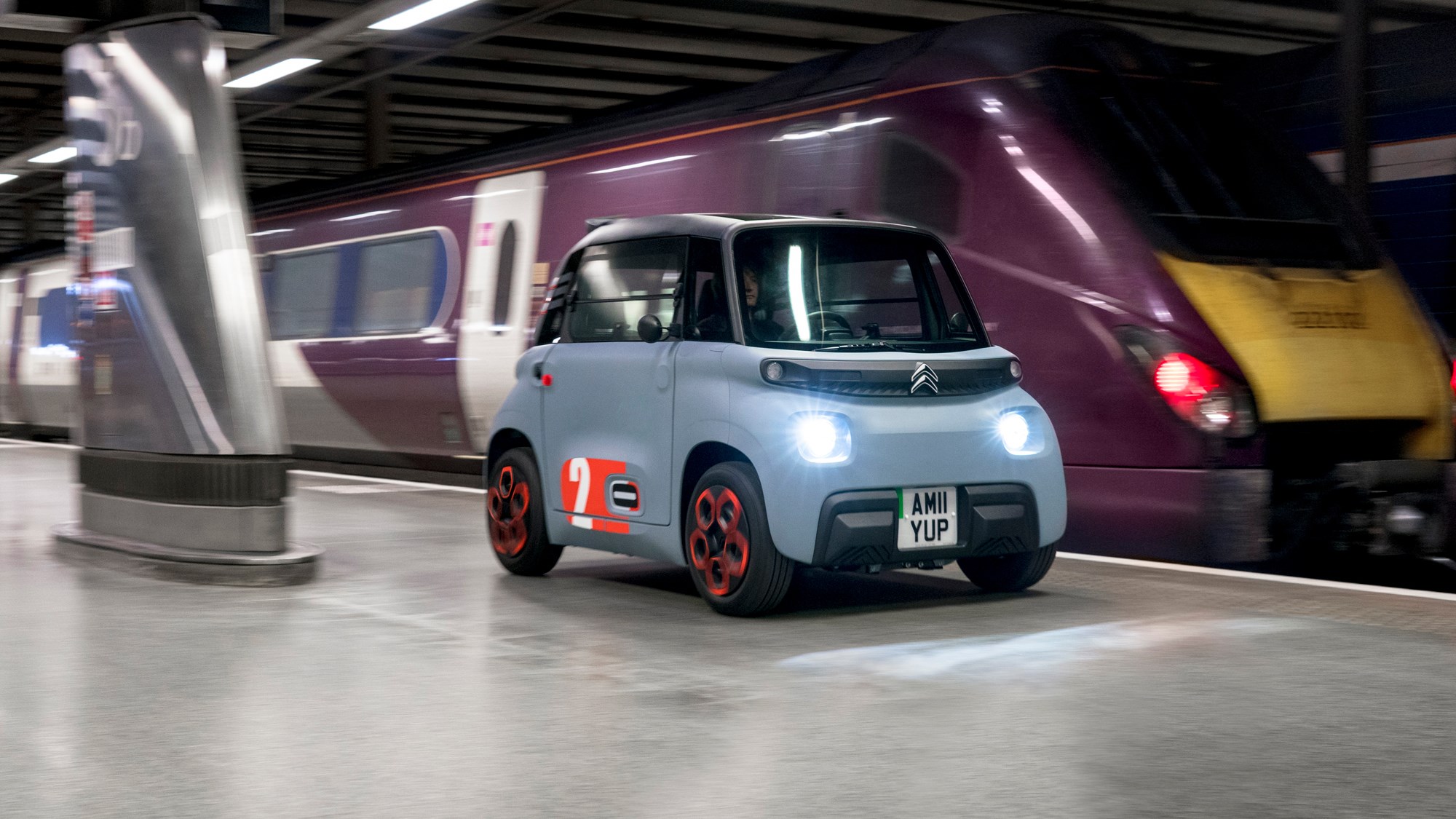► CAR drives Citroen’s new AMI
► It’s a ‘mobility solution’, not a car
► Dinky EV takes on the heart of London
The new Ami is a small electric-powered two-seat city ‘car’ that sets new standards for compactness, manoeuvrability, low cost and ease of use. Except, as Citroen is very keen to point out, it isn’t actually a car. Like the Renault Twizy and G-Wiz, it is officially classed as a quadricycle, which means it isn’t subject to the same laws and requirements on quite a few fronts. It also means you don’t need a full driving licence to get behind the wheel – just a scooter licence, the sort that 16-year-olds can get.
UK sales are now under way, with deliveries set to start in early 2023. Even with its low price point, it isn’t likely to be something that people walk into a dealer and hand over a load of cash for – even with rising interest rates it is still available on attractive monthly deals, even if the UK doesn’t get the same mobile-phone-rivalling rates.
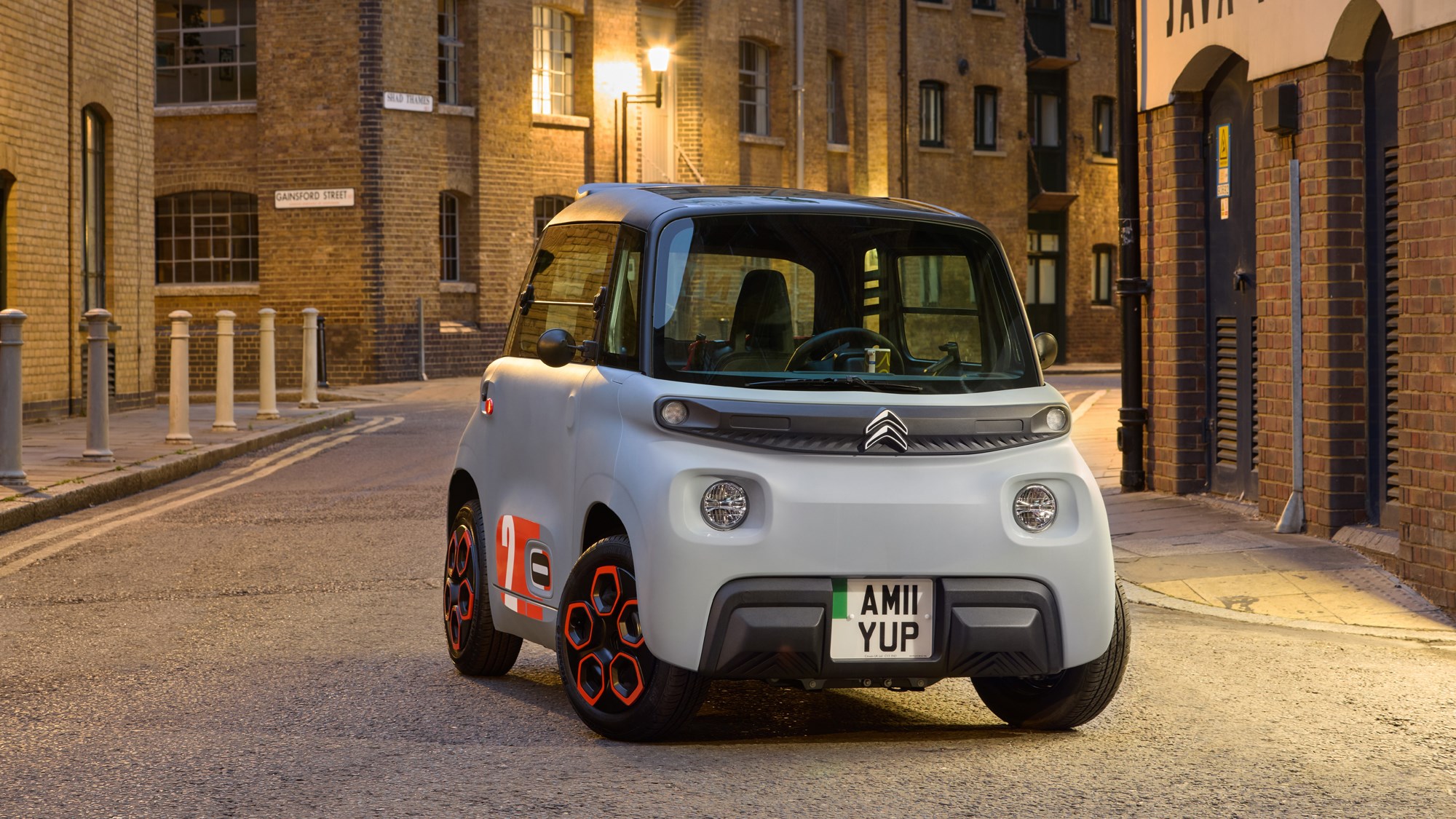
It also poses as many questions as it answers. Does any motor car, even an EV, have a future in crowded 21st-century cities? Will customers really want to rent short-term, or lease long-term, tiny electric runabouts? Previous efforts, from the Sinclair C5 to the aforementioned Renault Twizy, flopped. The Ami is similar but different to these, in that it is slow, compromised and not small enough to squeeze between traffic but it offers more protection, better storage and more weather proofing.
Let’s talk Ami details…
At just 2.41 metres long, it’s about three-quarters the length of the old (four-seat) Issigonis Mini, the world’s best-packaged small car.
Despite its conventional two-abreast seating, the Ami is just 150mm, or less than six inches, wider than the tandem-seat Renault Twizy and a handy 250mm narrower than a Volkswagen Up. Its footprint is well under half a Fiesta’s. At 485kg, it’s more than 600kg – or well over a Caterham – lighter than the base Fiesta. Turning circle, crucial for practical urban transport, is just 7.2 metres. A Fiesta’s is more than 10 metres, a swivel-on-a-sixpence London taxi’s is 7.6.
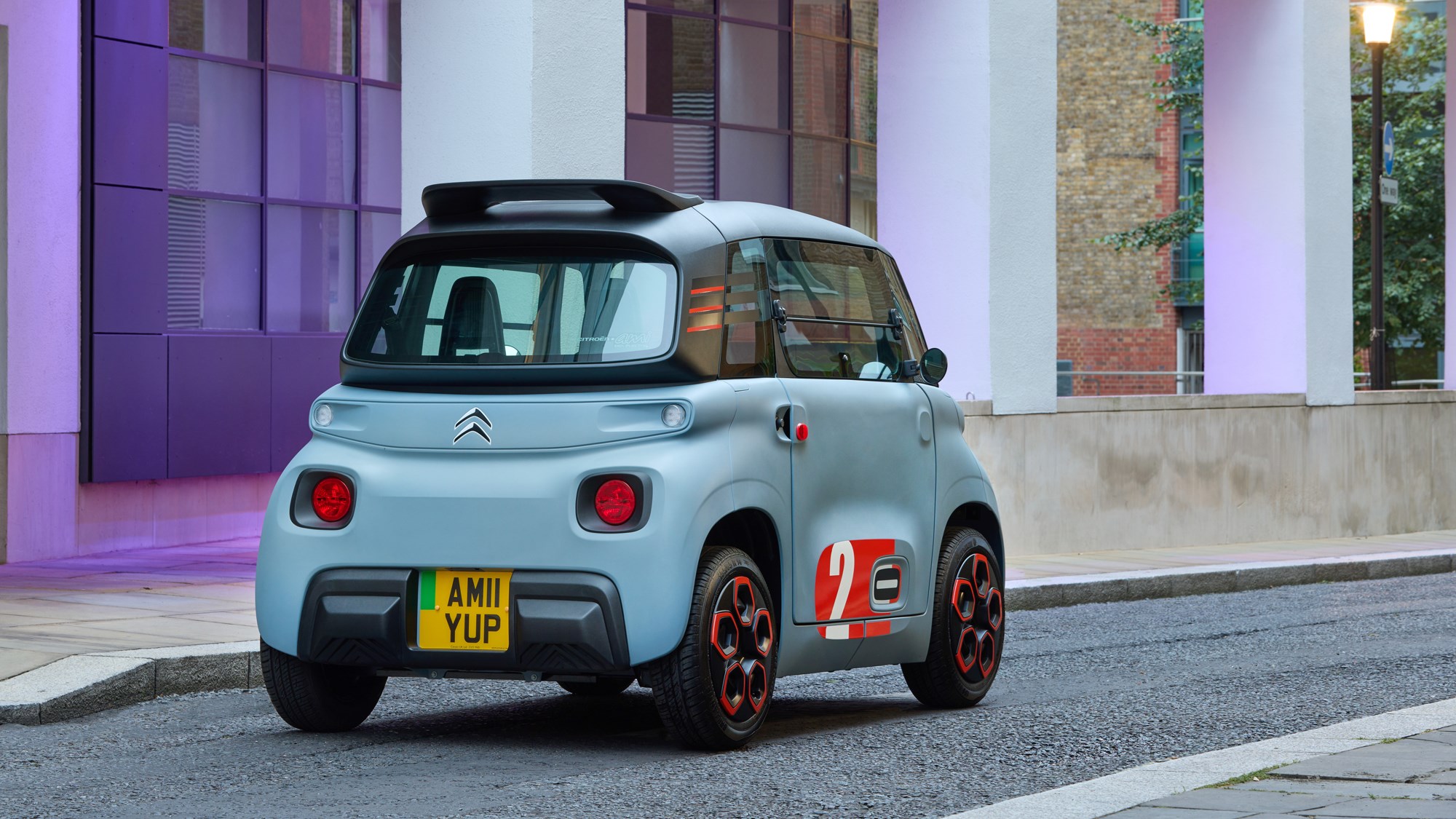
So it’s a very small and very light and very cheap two-seat car that strictly speaking isn’t a car at all. It is officially a quadricycle, like the little Twizy and the old G-Wiz, once loved by London’s gullible greens. This means it doesn’t need to pass modern car crash tests. So, no airbags, no crumple zones and no electronic safety aids. It may not be as safe in a smash as an Up, but it’s a good deal safer than a bicycle or scooter. And these, rather than cars, are its rivals. So is public transport.
As this is a very different sort of four-wheel vehicle, so it will be sold differently. You can order one through the Citroen website, or just put a deposit down. Reserve one and you will join the the approximately 2000 others that have done so. Complete the order and you’ll be part of a group of 650.
The Ami in situ
We meet our Ami in Westminster, in the heart of London. We find a simple welded-steel spaceframe, to which are attached unpainted plastic panels. The front and rear panels are identical, to save manufacturing costs. Even the doors are identical. The left or driver’s door (all Amis will be left-hand drive) is hinged at the rear, coach-door style, rather like its automotive opposite, a Rolls-Royce. The passenger’s door is front-hinged. Further to save costs, Amis are made in a PSA factory in Morocco.
Electric power comes from an 8bhp motor driving the front wheels. This huit chevaux Citroën uses a small 5.5kWh lithium-ion battery in the floor. A small battery means a smaller manufacturing carbon footprint, another star to the Ami’s eco credentials. Yet it’s powerful enough to give a perfectly adequate 46-mile range here.
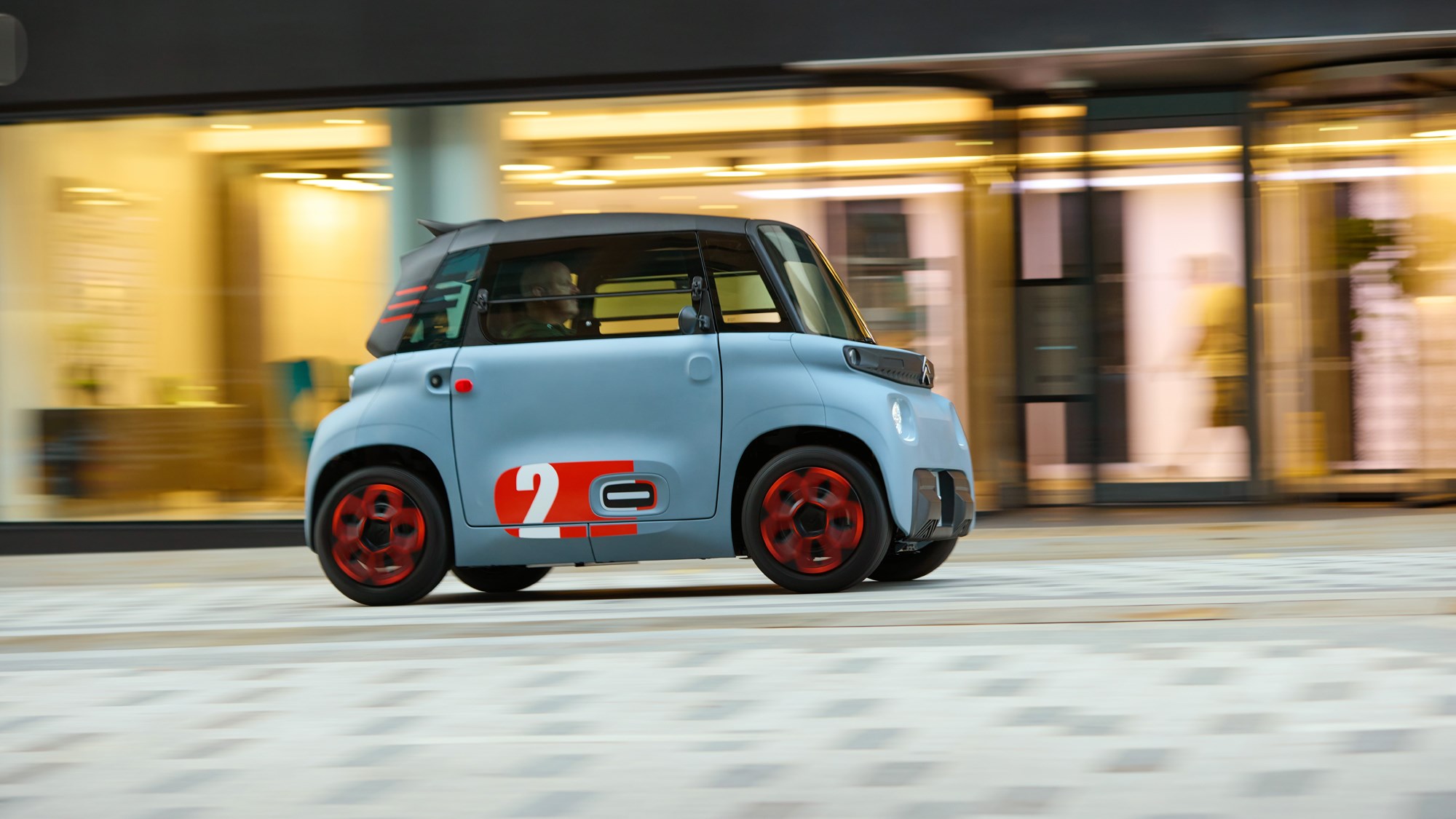
It’s a distinctive and cheerful-looking little thing, almost identical front to rear. It’s only by the shape of the roof and glass, and the colour of the lights (white for front, red for rear) that you can tell which way it is heading. It’s a car of two faces but in all honesty: what you see is what you get. It’s also higher than the hatch norm. This gives an elevated driving position, perfect for city use. This also means you’re not intimidated or bullied by other cars or vans. It’s wonderfully airy and bright as the big glass panoramic roof bathes you in sunlight. While this is glorious if you are heading in the right direction, the lack of sun visor means that you would be best off packing a cap for those days when the sun is in shining directly in from overhead.
Visibility is outstanding, helped by generous glazing, that high seat and a low beltline. This is another crucial quality, denied to most modern car buyers. It’s also easy to see all four corners – taller drivers will even be able to touch them. Because of this, parking is a cinch despite the lack of electronic aids that many urban drivers have come to rely on.
It’s spacious inside, easily big enough for two tall people. The cabin is minimalist, and that’s fine. There’s a simple single-speed fan, which sounds like a hair dryer, and a heater to prevent misting and keep the cabin tolerably snug on our wintry test day. There is no rear-view mirror. Use the wing mirrors instead. They work fine although you have to reach out of the windows and therefore across the cabin to adjust them. The seats are simple plastic shells with basic thin cushions and a cut out to relieve some pressure in your lower back area. This will help some but possibly be not supportive enough for others while all will feel the lack of padding after several hours on the move.
Practical rubber mats are underfoot, behind is a small stowage area (though no covered boot on the passenger version – only on the one-seater Cargo model), and in front we find a deep dashboard with a tray for oddments and a small digital display. The only instrumentation measures speed, electric range and total mileage. That’s all that’s needed.
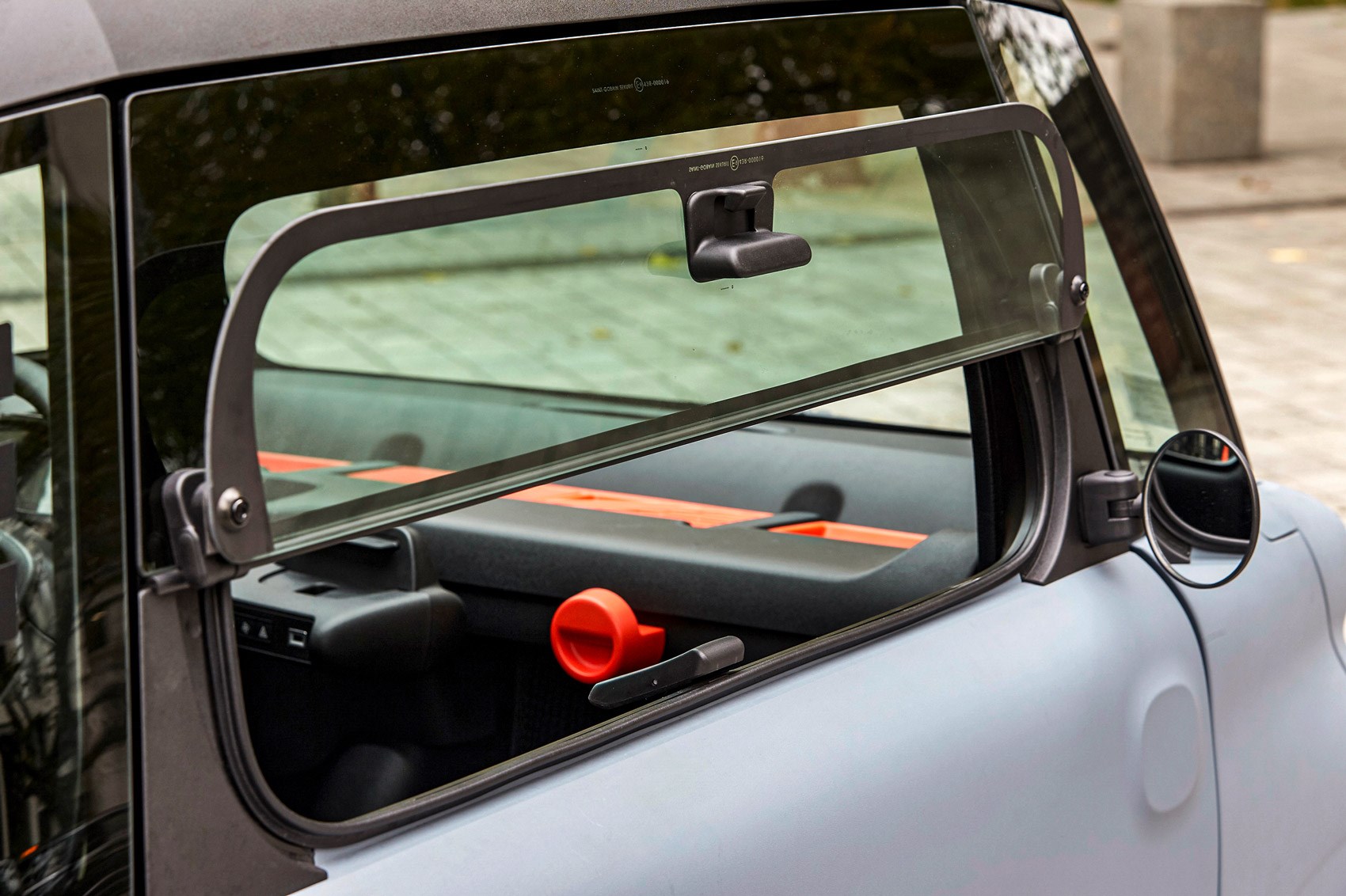
A cradle on the dash allows you to dock your smartphone and there’s a port for charging and a dongle to connect live data to your Ami smartphone app. Your phone is your infotainment system and, as Google Maps and Waze invariably do a better job than any in-car system, this isn’t much of a compromise. The cradle is a bit lightweight, and it’s fiddly to get the cable in, so some might choose to go for one that sticks to the windscreen instead. It’s a bit further away but still close enough to be visible.
The deep dash, with trays, would be perfect for small portable speakers, turning your Ami into a cut-price concert hall. In fact, you can get one such speaker from the official Ami accessories store, so you can stay on brand should you wish.
The windows open by flaps, hinged half way up and secured by a solid clip, 2CV-style. This liberates cabin space, as there’s no need for bulky doors to house the windows, although it takes a firm shove to get the window to stay in place and another to release it. There’s more than a hint of 2CV about the Ami: its minimalism, its lightness, its fun, its contrariness. Mind you, the 2CV was never small, nor was it really a city car.
Let’s drive
An old-fashioned key unlocks the big plastic-clad doors, which you open by pushing a button. Another key turns the ignition. The gear selector is a simple panel of buttons – D, N or R – next to the driver’ seat.
Acceleration is sprightly enough and no car accelerates faster to its top speed. Mind you, as this is just 28mph, nor should it take long. We’ve only ever driven the Ami in London, but right in the heart of the city in the sort of areas that aren’t off limits to vehicles but you still feel somewhat ill at ease driving through.
The Ami’s dimensions ease, if not totally eradicate, a lot of this stress. You don’t feel like you are imposing as much as you would even in a car-sized van, partly due to the smaller footprint you are taking up and partly because of how much positive attention it gets. The lack of insulation means that you’ll likely hear most of those interactions with the public, too, and we found ourselves solving an awkward ‘No, after you’ interaction by calling out rather than through an unclear series of hand gestures. The tension dissipated far quicker than it would in a bigger van.
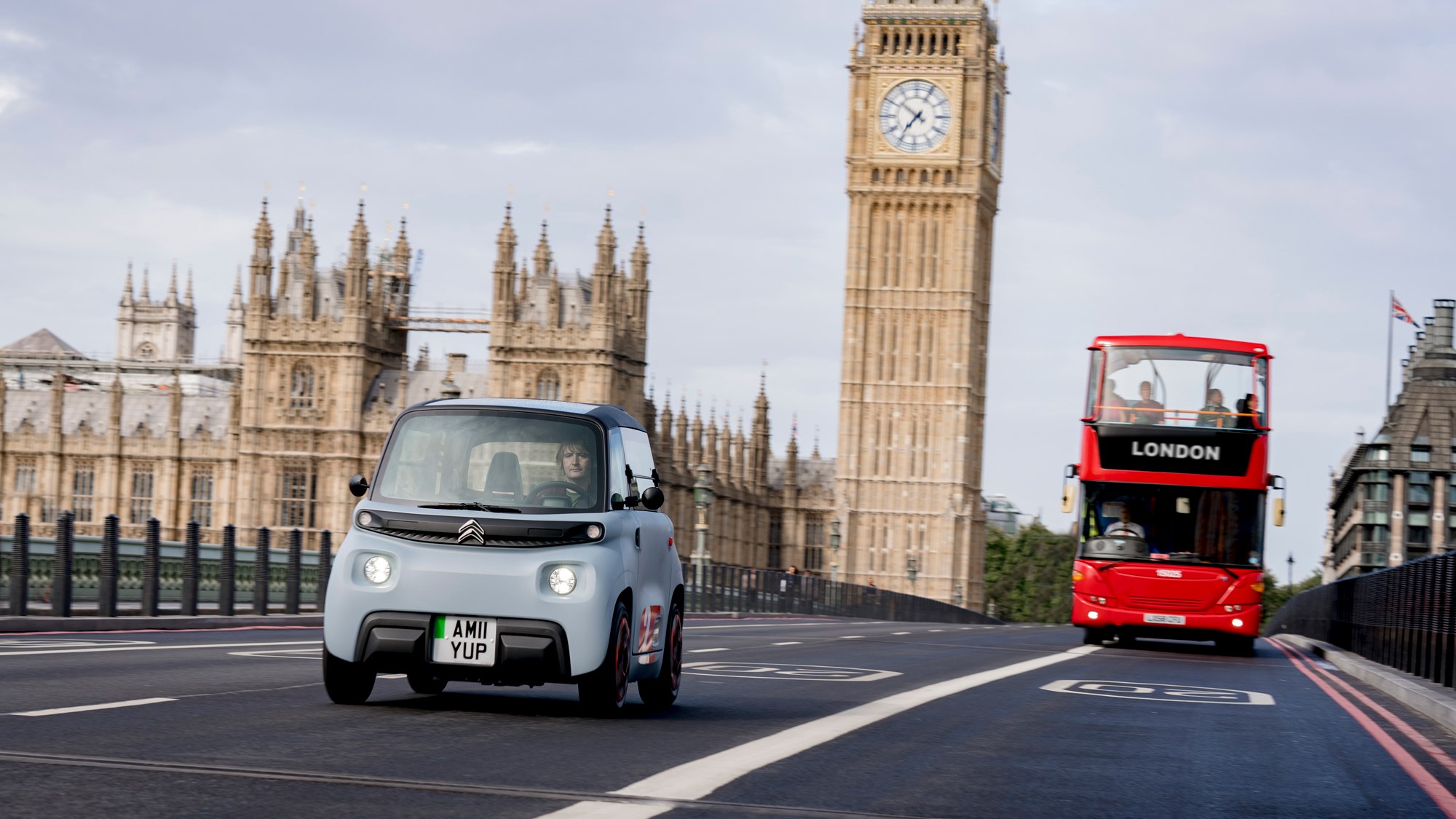
We didn’t have cause to charge on this occasion, although we have previously, and it is a simple case of linking it up to a domestic socket or via the standard-fit Type 2 charger. This doesn’t enable rapid charging – it takes the same time regardless of where you plug it in, but as this is only three hours you shouldn’t have much downtime.
There isn’t anything in the way of clever brake regeneration, so it is a two-pedal driving experience rather than the one-pedal approach of more sophisticated systems. There is also nothing in the way of hill-hold control, so you’ll either have to be swift of foot or make regular use of the handbrake if you are in a city with more slopes than our capital.
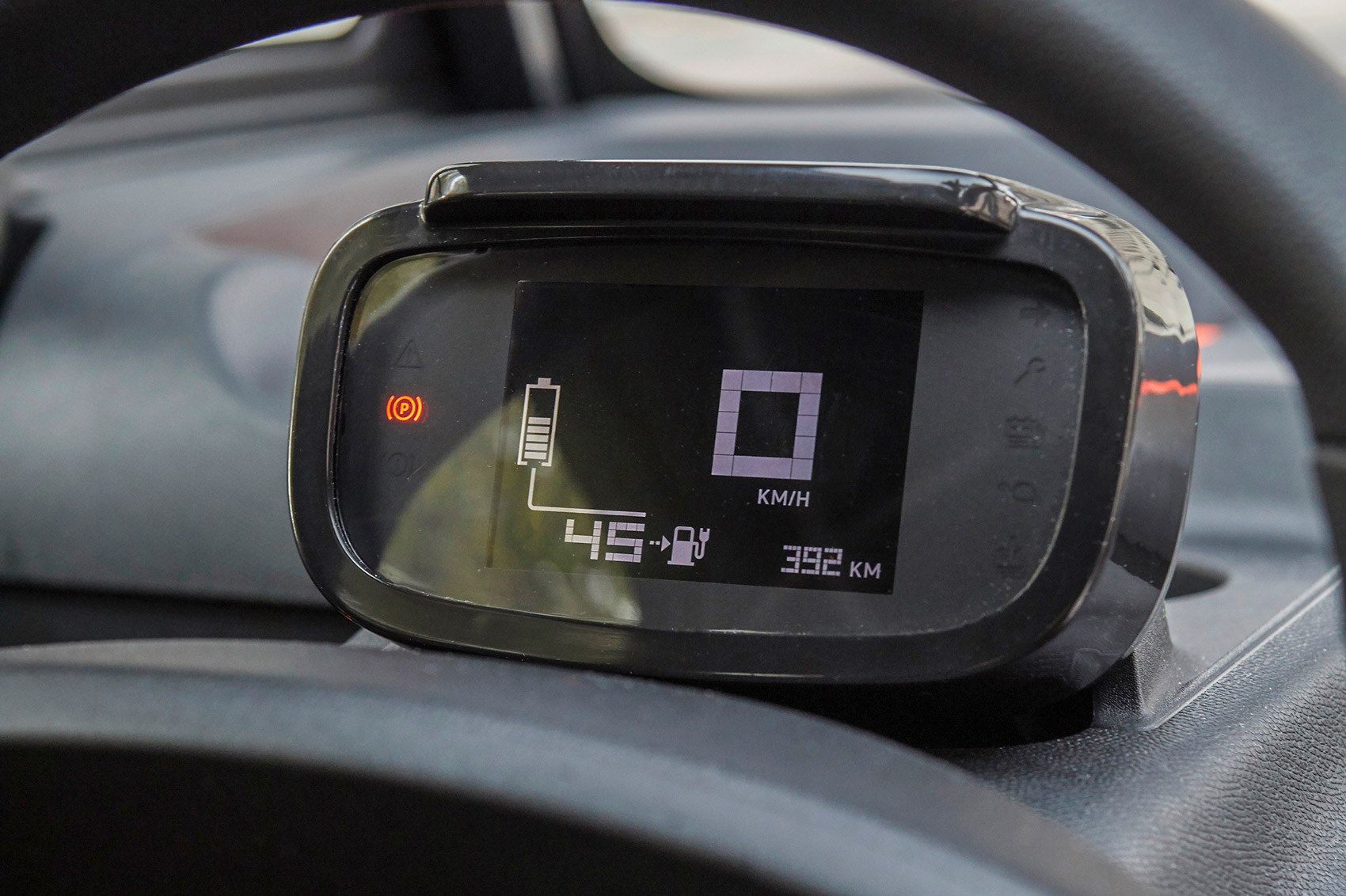
The Ami has no trouble keeping up with traffic. Only on a 40mph dual carriageway do you feel slow. But that’s okay. For 90 per cent of the time in town, 28mph is quite enough – we resisted the urge to see if it would set off the 20mph cameras in town as getting caught speeding in something this slow would be slightly embarrassing to say the least. What you lose in top speed you gain in manoeuvrability, slicing through congestion. You can squeeze through gaps and other drivers cheerfully let you filter into traffic.
It feels like a big, airy, glassy go-kart, snug and warm with its roof and doors – unlike the open-sided Twizy, designed for sun-kissed climes. Ride is firm – chaotically so on cobblestones – and the steering slow but precise. Its narrowness, lightness and wheel-at-each-corner stance make it a very precise car to drive, adding to the fun. At much over 25mph, it gets noisy, its e-motor buzzing like an electric food mixer at high revs but in the creeping traffic that makes up most of city life it is like a little oasis of calm.
Citroen Ami: verdict
Is it the future of urban mobility? The motor car has disfigured European cities and helped to shape American ones, usually unhappily. It initially helped transport us around town speedily before its ubiquity choked journey times, and our lungs. City fathers once thought the combustion engine the future for urban mobility, as they decommissioned trams, defunded buses, discouraged cycling and assisted suburban growth. Now, politicians rage against the car. Cycling and public transport can’t do everything, particularly if you have important documents/goods/people to get around town in the most direct route.
EVs are not the answer. They solve the emissions problem but nothing else. A Tesla or a Zoe clogs, clutters and scars our cities just as disastrously as a Toyota or a Ford. Heavy EVs also discharge nasty particulates from tyres and brakes. They may work well in the more spacious suburbs, but not in crowded city centres.
Maybe we’ll go back to the simple pleasures of the bicycle and look forward to novel forms of e-power, as we embrace electric scooters and electric bikes. They’ll certainly all have their places in tomorrow’s mixed-transport mega cities. But those who demand comfort – a roof, a proper seat, a heater, music – and prefer pushing an accelerator pedal to turning pedals will still want a car, or something like a car. This is where the Ami should appeal. It’s not the urban answer. But it should be part of the answer.
Citroën once innovated more richly than any other car company, pioneering new suspensions, new ways to steer and to brake, new aerodynamic solutions, and even a new engine. Yet the mainstream motor industry ignored every advance. Sadly, so did most customers. Perhaps they’ll all ignore Citroën again. This time, though, perhaps not.
